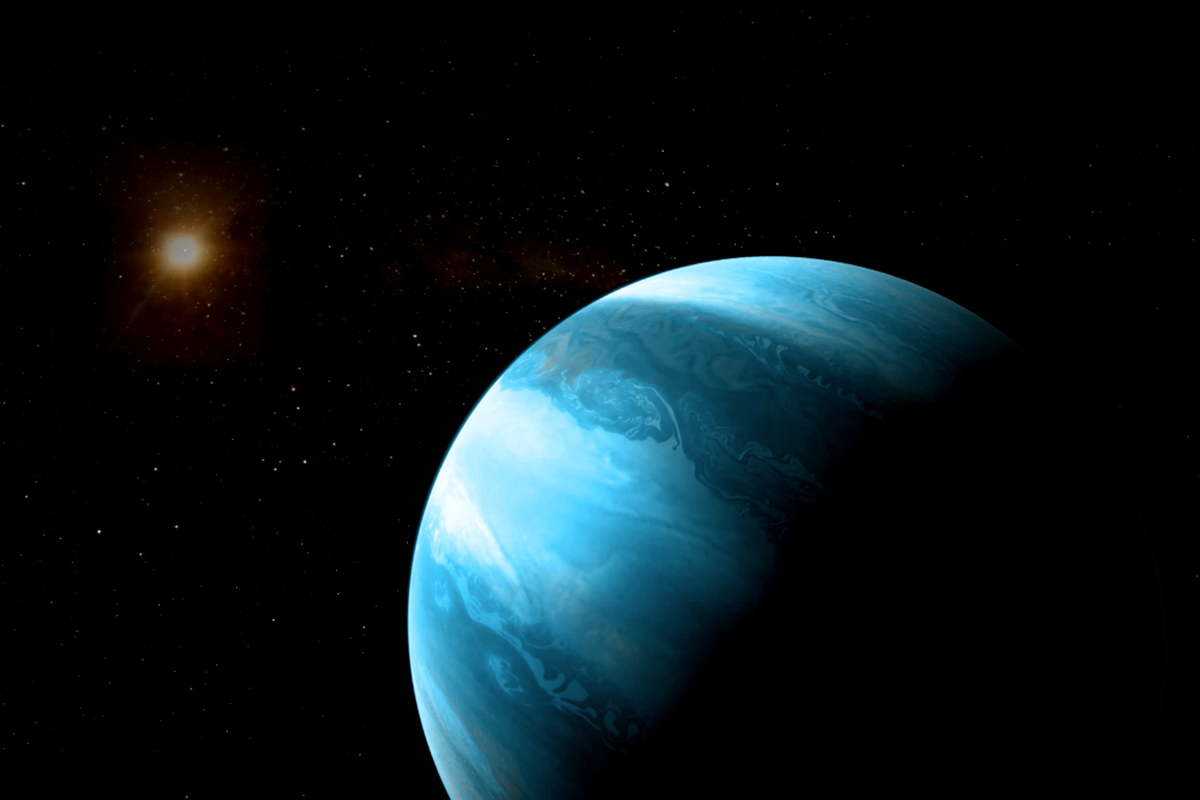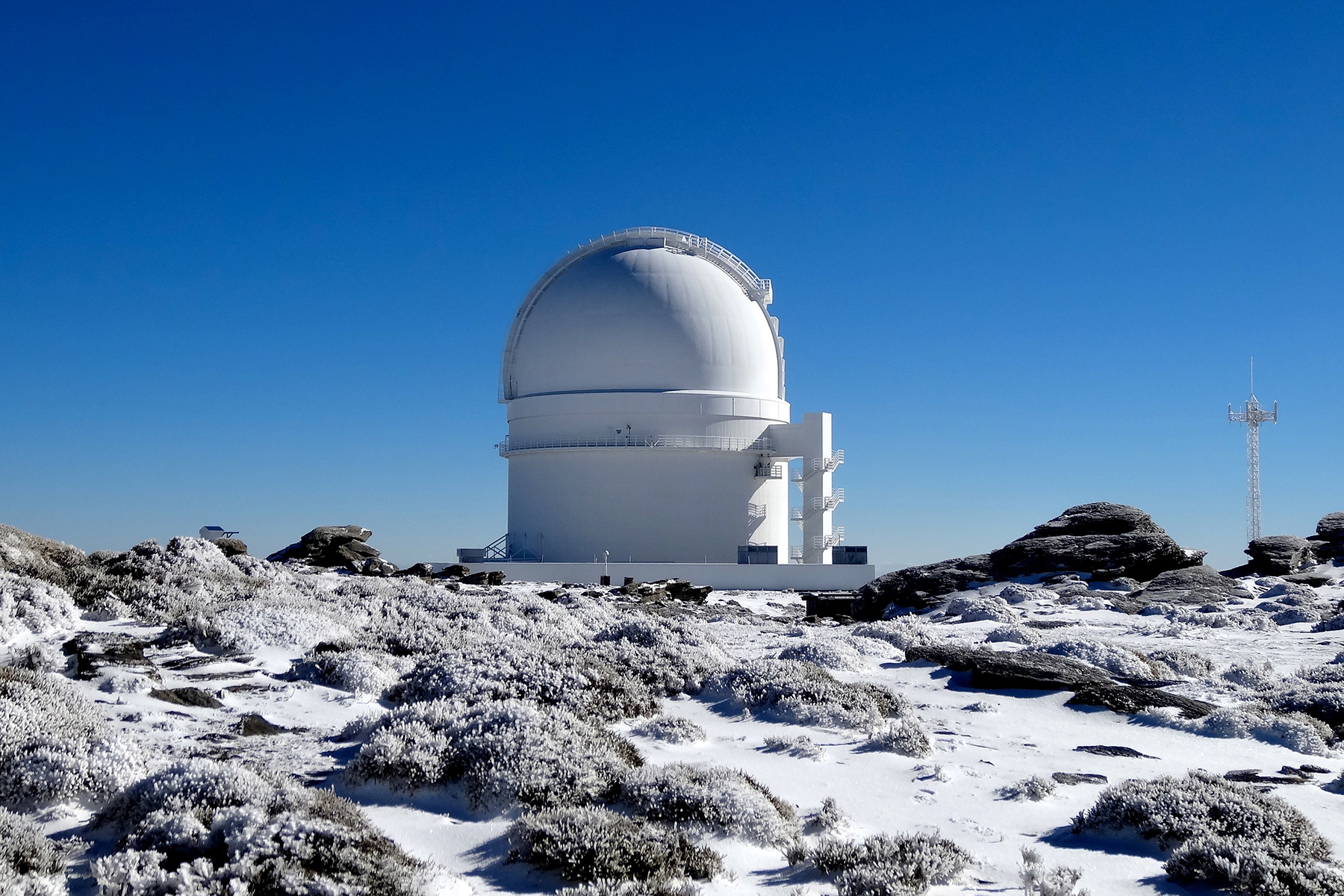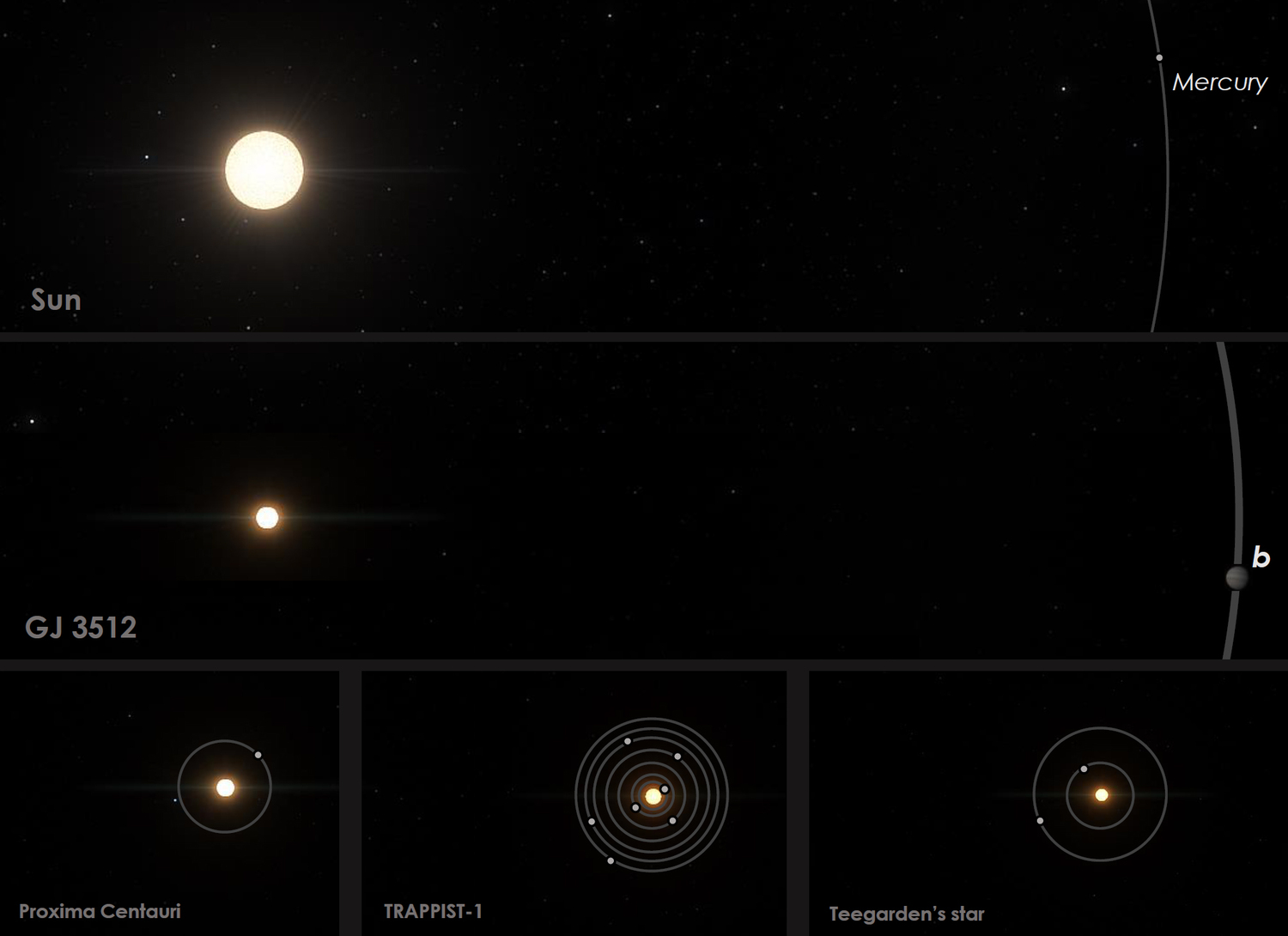A planet that shouldn’t exist
GJ 3512 is a red dwarf. The star is about 31 light-years from us and has only 12% the mass of the Sun. But as far as the size of its companions go, GJ 3512 doesn’t hold back. As a German and Spanish research team has discovered, it has a gas giant with a mass of almost half our Jupiter. “Such stars should actually only have Earth-sized planets or at most super-Earths with slightly more mass,” says Professor Christoph Mordasini of the Physics Institute at the University of Bern, discussing plausible scenarios for the formation of the large exoplanet with his team. “In contrast, GJ 3512b is a giant planet with a mass approximately half as large as that of Jupiter, and thus at least one order of magnitude more massive than the planets predicted by theoretical models for such small stars.”
The mysterious planet was found by a Spanish-German research consortium named CARMENES, whose goal is to discover planets around very small stars. To achieve this goal, the consortium built an innovative instrument that was installed in the Calor Alto observatory at an elevation of 2100 meters in southern Spain. Observations with this infrared spectrograph showed that the small star was moving toward and away from us at regular intervals – a phenomenon produced by a companion, which, in this case, had to be particularly massive. The work of all those involved has now been published in the renowned journal, Science.
Employees of the Institute for Astrophysics at the University of Göttingen were responsible for calibrating the data. They also analyzed the enormous quantity of complex data that was sent daily by the observatory. To discover the planet, the astronomers used the Doppler technique, which can be used to record the back and forth motion of a star when it is orbited by one or more planets. In this case, the star’s signal was so weak that it was almost not detected. After the data was analyzed, however, it was clear that its behavior pointed to something very interesting. The speed of the star changed very quickly and consistently. This indicated the presence of at least one massive companion. In addition, the irregular orbit of the newly discovered planet indicated the possibility of an earlier collision with another planet that might now be on a journey all alone, without its star, somewhere in the galaxy.
“Our model for the creation and development of planets predicts that a large number of small planets would form around small stars,“ says the Swiss researcher Mordasini. There shouldn’t “be any giant planets at all” around stars like GJ 3512. One possible explanation, in addition to the collision theory mentioned above, for the failure of the common theory might be the mechanism that forms the basis of the model, so-called core accretion. Here, planets grow larger and larger through the step-by-step agglomeration of smaller bodies. Maybe, according to the University of Bern in a press release, however, the giant planet GJ 3512b was formed by a fundamentally different mechanism: so-called gravitational collapse. “Here, part of the gas disk where planets are created collapses directly under its own gravity,” explains Mordasini. But this explanation also has problems. “In this case, how did the planet not grow any bigger and move even closer to its star? Both would be expected, if the gas disk had sufficient mass, so that it could become unstable under its own gravity,” says the researcher. “Planet GJ 3512b thus represents an important discovery that should improve our understanding of how planets form around such stars.”



